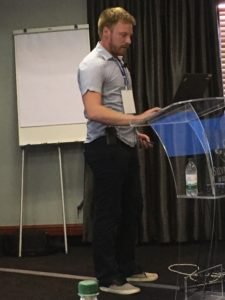 Africa is floor zero for using humanitarian drones and medical drone supply – and with revolutionary packages and the event of a humanitarian drone hall, UNICEF’s drone tasks in Malawi have change into a mannequin for the remainder of the world.
Africa is floor zero for using humanitarian drones and medical drone supply – and with revolutionary packages and the event of a humanitarian drone hall, UNICEF’s drone tasks in Malawi have change into a mannequin for the remainder of the world.
Matthias Boyen of UNICEF explains that drones resolve crucial issues for the folks of Malawi. The nation suffers from HIV prevalence of 10%, with 1.2 million contaminated. 40,0000 youngsters are born to an HIV+mom yearly – and these youngsters must be examined inside 6 weeks to start therapy and have the chance for a optimistic end result.
A dispersed and distant inhabitants mixed with a scarcity of transportation infrastructure makes that 6 week window a significant problem for healthcare suppliers. Traditionally transported by bike, samples and testing supplies can take 23 days to ship. A UNICEF venture utilizing Matternet drones for supply, can scale back that timeframe to mere hours.
One of the keys to UNICEF’s success is the humanitarian drone hall developed in collaboration with Malawi’s Civil Aviation Authority (CAA.) With a most altitude of 400 meters and a most distance of 80 km, the hall was developed as a quick approach to meet security necessities for testing drones. The venture is designed particularly for – and restricted to – the testing of humanitarian drones: because the hall’s announcement on the finish of 2016, 12 firms have utilized for use of the hall. And from supply and transport to catastrophe preparedness and response, drones are providing vital worth in Malawi.
Boyen’s workforce is utilizing drones for each catastrophe preparedness and catastrophe response. Flying an Inspire 2 to take imagery and video, they’re creating giant scale detailed preparedness maps. With these preparedness maps, precisely exhibiting the terrain earlier than an occasion, groups can examine pictures taken after a catastrophe to shortly determine issues. Sophisticated flood modeling and aerial pictures of wells and water sources are components of the preparedness plan.
When taking pictures for catastrophe response, says Boyen, “it’s really improvisational… we always try to engage the community.” That engagement isn’t just good PR, however the involvement of native communities helps to information missions to be simpler. ” We have three screens, one simply for the neighborhood to look at – they inform us the place to go,” Boyen explains.
While the federal government in Malawi has supplied vital assist for the UNICEF venture, getting neighborhood assist requires training. Boyen’s workforce travels into communities with the nation’s ministry of training to elucidate what drones are used for – and the neighborhood has acquired the drones, and the info exhibiting their properties and setting, with enthusiasm.
So far, UNICEF’s assessments in Malawi have seen success – fixing actual issues and providing priceless instruments. In the subsequent step that nations around the globe may mannequin, the workforce will take part in a catastrophe response simulation – a check of the flexibility of the workforce to ship actionable info for efficient response. During the simulation, the entire drones obtainable within the nation will fly and move off knowledge for evaluation; a coordinating physique will ship related knowledge to response groups together with the CAA and Malawi Defense drive.
The drone hall is an idea that received’t work in every single place – Malawi selected a distant space with a light-weight inhabitants and low air site visitors. But it’s being replicated in different nations anxious to get drone packages off the bottom. And the teachings discovered on the bottom in Malawi about neighborhood involvement and catastrophe response create a use case that may be replicated throughout the globe.
 Unmanned Aerial Vehicle The latest drone news
Unmanned Aerial Vehicle The latest drone news




